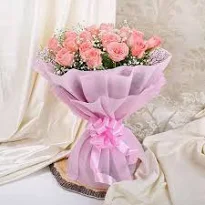Flowers have always played a significant role in human culture, often used to express emotions that words fail to convey. In fact, there’s an entire symbolic communication system known as The Language of Flowers. This enchanting tradition, also known as floriography, dates back centuries and allows people to send heartfelt messages through carefully selected blooms. In this blog, we’ll delve into The Language of Flowers, decoding the meanings behind various flowers and helping you craft the perfect bouquet for any occasion.
A Brief History of The Language of Flowers
The Language of Flowers has roots in several ancient cultures, including the Greeks, Romans, Egyptians, and Chinese. However, it gained immense popularity in the Victorian era when expressing emotions directly was considered improper. During this time, flowers became a secret code, allowing people to communicate feelings of love, sorrow, friendship, or disdain without speaking a word.
Floral dictionaries were published, detailing the meanings of different flowers. A red rose symbolized deep love, while a yellow carnation indicated rejection. These floral codes became an essential part of courtship, condolences, and celebrations.
The Symbolism Behind Popular Flowers
To truly understand The Language of Flowers, let’s explore what some of the most popular flowers traditionally symbolize:
- Roses: Perhaps the most iconic symbol of love. Red roses convey deep passion, pink roses express admiration, and white roses symbolize purity and new beginnings.
- Lilies: These elegant flowers represent renewal and rebirth. White lilies are often used at funerals, symbolizing the restored innocence of the departed soul.
- Tulips: A declaration of love. Red tulips convey passionate love, while yellow tulips can represent cheerful thoughts.
- Orchids: Represent luxury, beauty, and strength. A perfect gift for someone who appreciates elegance and uniqueness.
- Sunflowers: Symbolize adoration and loyalty. Their bright, sunny appearance makes them ideal for bringing joy and warmth.
- Daisies: Represent innocence and purity. They are often associated with childhood and simplicity.
Building the Perfect Bouquet with Meaning
Creating a bouquet isn’t just about choosing pretty flowers; it’s about crafting a message. Here’s how you can use The Language of Flowers to convey your emotions effectively:
- Romantic Gestures: Combine red roses, tulips, and orchids for a passionate bouquet that screams love and admiration.
- Friendship and Support: Choose yellow roses, sunflowers, and daisies to convey happiness, support, and loyalty.
- Sympathy and Comfort: White lilies, white roses, and lavender express peace, remembrance, and grace.
- Celebratory Bouquets: Bright colors like orange gerberas, irises, and purple orchids make great choices for birthdays, promotions, or achievements.
Modern Relevance of The Language of Flowers
In today’s fast-paced digital world, The Language of Flowers still holds a timeless charm. Whether you’re sending flowers through an online service or hand-delivering a bouquet, the meanings behind your chosen blooms can deepen the impact of your gesture.
Florists today are rediscovering the beauty of floriography, often offering bouquets based on themes like “Love,” “Sympathy,” “Congratulations,” or “Just Because.” Understanding The Language of Flowers allows you to customize these pre-made options or create your own bouquet that speaks volumes.
Cultural Variations in Flower Symbolism
While many meanings in The Language of Flowers are universal, some interpretations vary by culture:
- In Japan, the practice of Hanakotoba is their version of the language of flowers. For example, the red camellia signifies deep love.
- In China, peonies are seen as symbols of wealth and honor.
- In France, the lily is associated with the Virgin Mary and represents purity.
Being aware of these cultural nuances can help you choose the right flowers, especially for international friends or global occasions.
The Language of Flowers in Weddings
Weddings are perhaps the most expressive setting for floral symbolism. Brides often choose flowers based on their meanings:
- White roses and lilies: For purity and commitment.
- Peonies: Represent a happy marriage and good fortune.
- Baby’s Breath: Symbolizes everlasting love and innocence.
- Ivy and fern accents: Represent fidelity and humility.
Understanding The Language of Flowers can help couples personalize their special day and convey their love story through blooms.
How to Personalize Your Bouquet
To create a truly personalized floral arrangement:
- Know the recipient: Consider their favorite flowers and colors.
- Pick a theme: Whether it’s romance, sympathy, or celebration, choose flowers that match the sentiment.
- Add a note: Enhance your gift by explaining the meanings behind the flowers you chose. This not only adds a personal touch but also educates the recipient on The Language of Flowers.
Preserving the Sentiment
If you’ve received a meaningful bouquet, consider preserving it as a keepsake. Pressing or drying flowers allows you to hold onto the sentiment behind the gesture.
You can frame pressed flowers or store dried blooms in decorative jars. Not only do they serve as beautiful decor, but they also remind you of the special messages they carried.
Conclusion: Speaking Volumes with Silence
In a world where communication is often instant and digital, The Language of Flowers offers a beautiful, thoughtful way to connect with others. Whether you’re expressing love, sympathy, congratulations, or simply reminding someone they’re appreciated, a well-chosen bouquet speaks volumes without uttering a single word.
Next time you pick out flowers, think beyond their beauty. Let The Language of Flowers guide your choices and turn a simple bouquet into a heartfelt message that lingers long after the petals have faded.
Tags: The Language of Flowers, Flower Meanings, Floriography, Symbolism of Flowers, Flower Gifting Guide, Romantic Bouquets, Sympathy Flowers, Floral Culture, Wedding Flower Symbolism
for more click herehttps://digirise.co.in/

